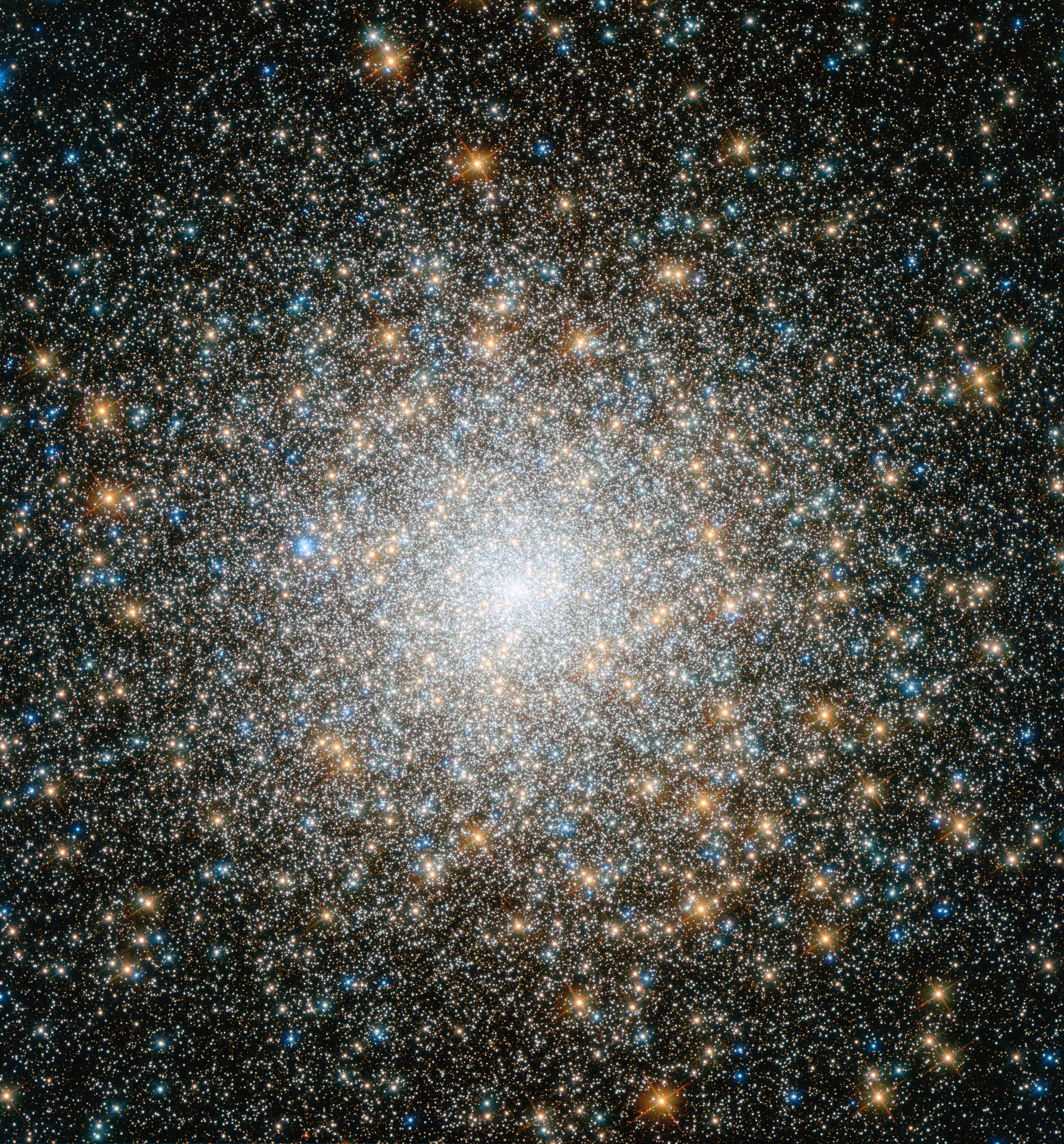
The James Webb Space Telescope (JWST) just spotted round clusters of stars inside a galaxy more than 13 billion light years away, which formed just a few hundred million years after the Big Bang. The new discovery may shed light on how the universe’s earliest galaxies formed and evolved, and how they helped light up the universe after the Cosmic Dark Ages. And it turns out that close-knit balls of stars called globular clusters may have played an important role.
Stockholm University astrophysicist Angela Adamo and her colleagues published their work in the journal Nature.

Dense, Glittering Balls of Stars
JWST’s NIRCam instrument recently peered 13.6 billion years across the universe — and 13.6 billion years back in time — to a tiny, faint galaxy called the Cosmic Gems arc, which the Hubble Space Telescope first spotted in 2018. The galaxy is only visible because its light is magnified by a gravitational lens on its way across the universe — and that light’s journey is so long that we’re seeing the galaxy as it looked just 460 million years after the Big Bang. NIRCam’s higher-resolution images allowed Adamo and her colleagues to not only see the galaxy, but point out details inside it: like five tiny, brightly blazing balls of stars, each just 3.26 light years (1 parsec) wide. That’s an extremely tiny feature to resolve at such a tremendous distance.
Based on their motion and the spectrum of light they emit, these distant glittering spheres are tightly-packed clusters of stars, all bound together by each other’s gravity: the ancestors of what will eventually be called globular clusters.
Globular clusters are dense balls of stars, all held together by each other’s gravity. And their hold on each other is tight enough to survive the tumult and tearing of a violent merger between galaxies, so these glittering spheres become cosmic fossils of a sort, tiny remnants of a galaxy that once was — at least in the parts of the universe closest to us, which have been shaped by billions of years of galaxies colliding and merging.
However, the newly-discovered star clusters in the Cosmic Gem arc are packs of very young stars in a young cosmic neighborhood. Based on how little dust is floating around and between the stars, and based on how few elements heavier than hydrogen the clusters contain (as revealed by the spectrum of light they emit), they range from 9 million to 36 million years old, in a galaxy that’s about 79 million years old — in a universe less than 6 times that age.
These old-school star clusters are hundreds of times denser than globular clusters in the more modern, nearby universe. They are already busily reshaping their galaxy and the universe around them. Adamo and her colleagues suggest that early globular clusters like these may have played an important role in something called the epoch of reionization, when the first stars began to clear the dense fog that had shrouded the universe in darkness for hundreds of millions of years.
Around 400,000 years after the universe began, the blazing heat of the Big Bang began to cool, and the wildly-moving bits of matter that made up the young universe began, gradually, to settle down. Electrons bonded with protons to form the first hydrogen atoms, and the glowing plasma (electrically-charged gas) that had filled the small, newborn universe became a dark cloud of gas with no electrical charge, which permeated everything. The gas kept light from being able to travel through space, which means that everything that happened for the next 3.6 million years is hidden in a dark cloud. Astronomers call this time the Cosmic Dark Ages.
But around 400 million years after the Big Bang, the first stars formed, and their radiation stripped electrons from the hydrogen molecules that made up the dark clouds around them turning the gas into plasma that light could shine through. The epoch of reionization had begun.
Some astronomers have suggested that small galaxies in the very early universe — like the Cosmic Gems arc — may have been the driving forces behind the epoch of reionization, because their stars produced most of the radiation that reionized the cold molecular gas of the Dark Ages. And now Adamo and her colleagues suggest that primitive globular clusters, like the ones they recently observed with NIRCam, could have played a crucial role in that process.
Each of the dense, glittering balls of stars in the Cosmic Gems arc contains enough stars to make up between 1 million and 3 million times our Sun’s mass, and many of those stars are cosmic behemoths blazing blue-white. The result is a tremendous amount of powerful radiation pouring out into the surrounding gas, stripping away electrons and lighting up the early universe.







